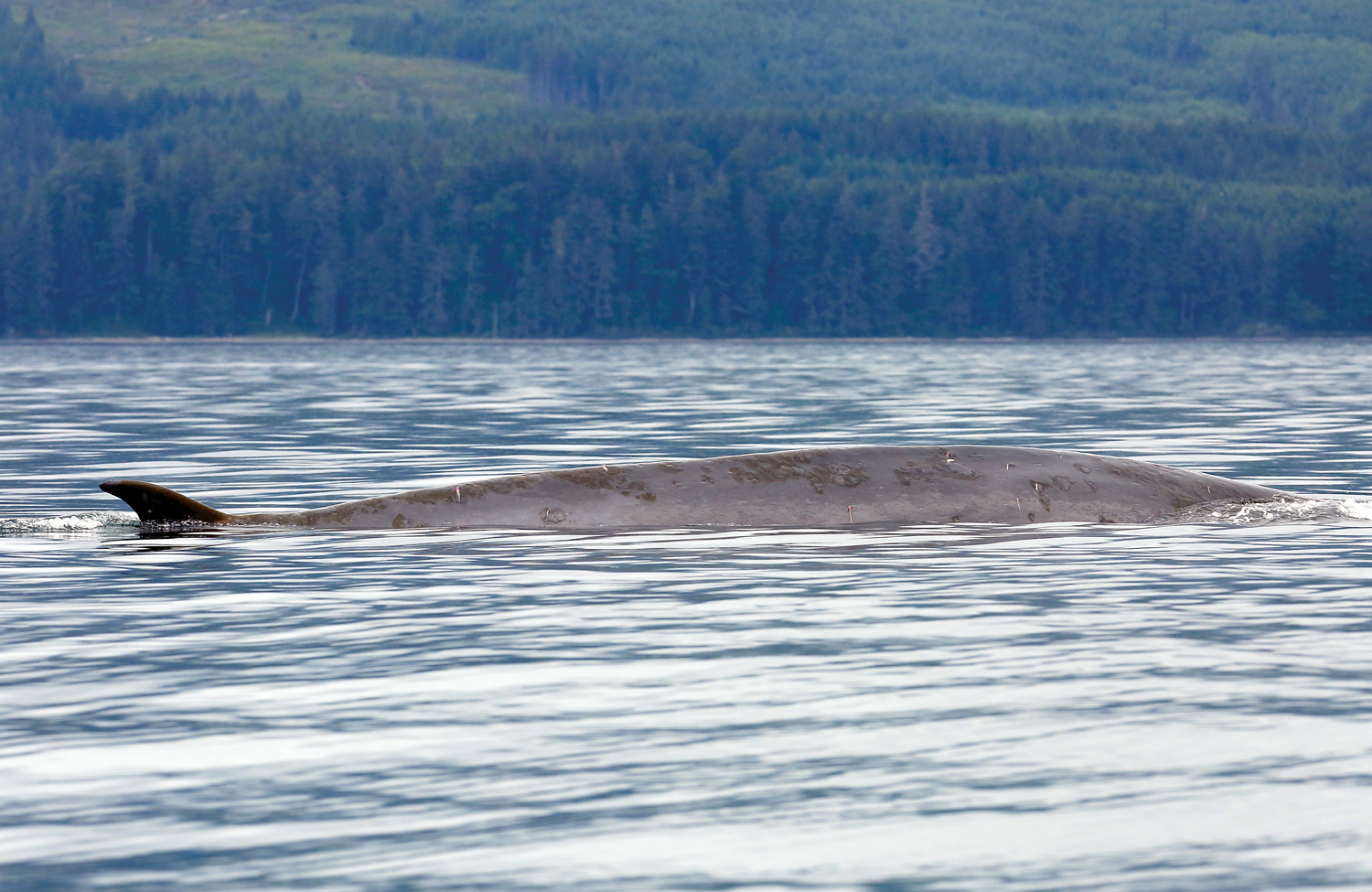SEQUIM — Confirmed recent sightings of fin and humpback whales in the Salish Sea might indicate the two species are recolonizing the area after once being driven away by commercial hunters, said Michael Harris, Pacific Whale Watch Association executive director.
Such developments are positive indicators that whale populations are recovering, he said.
On the flip side, the return of the whales might indicate the health of the ocean as a whole has declined to the point where they are unable to find enough food in their historic foraging grounds, forcing them to head further east in their never-ending search for sustenance, Harris said.
“There’s no question that ocean conditions are playing a big role here,” he said.
Such conditions include excessive algae bloom on the Pacific Coast, ocean acidification and warming waters, he said.
“Sub-optimal foraging conditions in some of those historic and nutritional areas for these animals” might be forcing the whales to explore “new places to find food,” Harris said.
Fin whales and humpbacks “are very flexible with the things they forage,” he said.
“They will eat a variety of small fish — sardines, anchovies [and] herring.”
On a positive note, Harris said he hopes the return of the whales indicates the local herring population, once decimated, is recovering.
“If the herring is coming back, that bodes quite well for salmon,” he said.
“If the salmon come back, that means that our resident orcas have good prospects going forward.”
Both humpback and fin whales are now being observed in waters commonly dominated by orca whales, Harris said.
First came what scientists call the “humpback comeback” — the return of humpback whales to the Salish Sea after once being wiped out in these waters by hunters a half-century ago, Harris said.
Then, Pacific Whale Watch Association representatives last month reported the surfacing of common dolphins generally found in the warm waters of the tropics off Port Angeles — possibly the first-ever confirmed sighting of the species in the inland waters of Washington state, Harris said.
It is unknown why the dolphins visited the area, he said.
There have also been two sightings of fin whales in the past year by the crew of the Chilkat Express, Harris said.
Fin whales can reach 85 feet long, weigh up to about 75 tons and live up to 90 years, Harris said in a news release. Listed as an endangered species in the U.S., they once were common in the Salish Sea, he said.
Adult fin whales are the second-largest creatures to ever roam the Earth behind the blue whale, Harris said.
“This is like finding a brontosaurus in your backyard,” he said.
The sighting happened July 15 a few miles northeast of Dungeness Spit, Harris said.
The full-grown adult whale is estimated to be between 60 and 70 feet long and weigh about 70 tons.
The sighting was confirmed by Capt. Mark Malleson, skipper for Prince of Whales Whale Watching in Victoria, B.C., and contract researcher for Fisheries and Oceans Canada and the Center for Whale Research, according to the release.
The crew of the Chilkat Express also was credited last September for sighting a juvenile fin whale south off Smith Island, located in the eastern Strait of Juan de Fuca, Harris said.
That was the first confirmed live sighting of the species in the inland waters of Washington state since 1930, he said.
Whale watchers dubbed that whale “Finnegan,” who for the next several months was a daily forager off Smith Island, providing extraordinary opportunities to observe and study one of the marine world’s most fascinating and mysterious creatures, Harris said.
The sighting of fin whales setting up camp here continues to capture the attention of the scientific community, Harris said.
Whale watchers and researchers are still determining why rare whales and dolphins are now entering the inland waterways, he said.
“Perhaps with Finnegan, and now this new sighting, it’s an indication that fin whales are . . . returning for good. We’re hoping this big guy is the second fin in, with plenty more to follow.”
The return of the whales certainly is appreciated by those in the whale watching business, Harris said.
He said some skippers have reported some humpback pods with up to 30 whales, something unheard of in the past several decades.
That is because the whales almost were hunted to extinction by humans.
“The populations of these large whales are rebounding, and a lot of that has to do with the banning of commercial whaling in 1966,” Harris said.
Before that time, “whalers particularly targeted fin whales and humpbacks and they truly decimated the local populations, and otherwise imprinted on them that the inland waters here are inhospitable, to say the least,” Harris continued.
The total historical North Pacific population was estimated at 42,000 to 45,000 before the start of whaling, according to scientific studies. Of this, the population in the eastern portion of the North Pacific was estimated to be 25,000 to 27,000.
By 1975, the estimate had declined to between 8,000 and 16,000.
The population seems to now be rebounding, Harris said.
“Whaling stopped, and 50 years later we’ve seen the humpbacks recovered” and are now “coming back and recolonizing these historic foraging areas,” he said.
________
Features Editor Chris McDaniel can be reached at 360-452-2345, ext. 56650, or cmcdaniel@peninsuladailynews.com.

